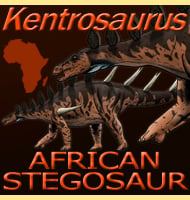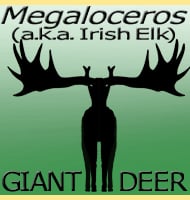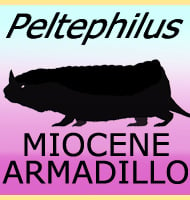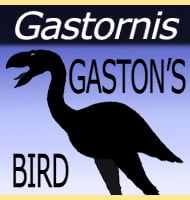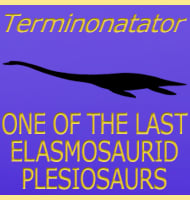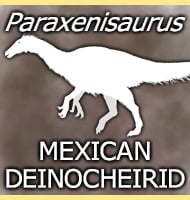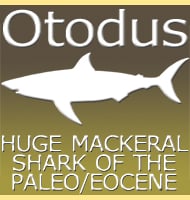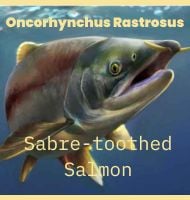In Depth
With a temporal range that spans from the late Cretaceous to the mid Miocene, Diplocynodon is yet further proof of how perfect the crocodile form is for survival. Represented by several species, the Diplocynodon genus has one of the longest known temporal ranges for a specific crocodile genus, and seems to have been widespread over at least Western Europe and the Eastern United States.
The genus name ‘double dog tooth’ is a reference to two large fang-like teeth, which are among the signature features of the genus. Diplocynodon is also one of the best preserved crocodile genera, particularly specimens that have been recovered from the world famous Messel Pit. The anoxic (oxygen deficient) conditions at the bottom of this prehistoric lake were so perfect for preserving the bodies of dead animals that most of the skeletal elements of Diplocynodon are known.
Diplocynodon are perceived as alligator-like and dietary wise they are thought to have been similar to modern alligators too. Young hatchling Diplocynodon would have hunted insects and other invertebrates as well as small vertebrates too. As they grew bigger, Diplocynodon would switch to slightly larger vertebrates including fish, mammals, birds, more or less anything that they could catch. Diplocynodon are also noted for having a tough covering of scales all over their bodies including their bellies. This might indicate that Diplocynodon spent a large amount of time on land or scrambling over obstacles, hence the need for an armoured belly. The armoured belly might also indicate the presence of other predators potentially more dangerous than Diplocynodon which resulted in the need for extra armour.
The Diplocynodon genus has a long classification history with several other named genera now referred to represent this genus. The Cretaceous crocodile genus Tadzhikosuchus from Tajikistan and Uzbekistan has also been considered to be a synonym of Diplocynodon because it differs only in the form of its tooth sockets and tooth arrangement. If correct then not only will this reinforce the origin of the Diplocynodon genus in the late cretaceous, but it will also extend the known geographic range of this crocodile into central Asia. By extension another genus of crocodile called Zhyrosuchus which has been considered to be a synonym of Tadzhikosuchus may end up being a synonym of Diplocynodon, though the fragmentary remains of Zhyrosuchus make it hard to be certain of this.
Further Reading
- Diplocynodon muelleri comb. nov., an Oligocene diplocynodontine alligatoroid from Catalonia (Ebro Basin, Lleida Province, Spain) - Paolo Pirasa & Angela D. Buscalionib - 2006. - A new species of Diplocynodon (Crocodylia, Alligatoroidea) from the Late Eocene of the Massif Central, France, and the evolution of the genus in the climatic context of the Late Palaeogene - Jeremy E. Martin - 2010. - Taxonomic clarification of Diplocynodon Pomel, 1847 (Crocodilia) from the Miocene of Styria, Austria - Jeremy E. Martin & Martin Gross - 2011. - Reappraisal of the morphology and phylogenetic relationships of the middle Eocene alligatoroid Diplocynodon deponiae (Frey, Laemmert, and Riess, 1987) based on a three-dimensional specimen - Massimo Delfino & Thierry Smith - 2012. - Mesozoic crocodyliforms of north-central Eurasia. In M. J. Benton, M. A. Shishkin, D. M. Unwin, E. N. Kurochkin (eds.), The Age of Dinosaurs in Russia and Mongolia 402-419 - G. W. Storrs and M. B. Efimov - 2000. – Diplocynodon muelleri comb. nov., an Oligocene diplocynodontine alligatoroid from Catalonia (Ebro Basin, Lleida Province, Spain). – Journal of Vertebrate Paleontology. 26 (3): 608–620. – Paolo Pirasa & Angela D. Buscalionib – 2006. – A new species of Diplocynodon (Crocodylia, Alligatoroidea) from the Late Eocene of the Massif Central, France, and the evolution of the genus in the climatic context of the Late Palaeogene. – Geological Magazine. 147 (4): 596–610. – Jeremy E. Martin – 2010. – Taxonomic clarification of Diplocynodon Pomel, 1847 (Crocodilia) from the Miocene of Styria, Austria. – Neues Jahrbuch f�r Geologie und Pal�ontologie – Abhandlungen. 261 (2): 177–193. – Jeremy E. Martin & Martin Gross – 2011. – Reappraisal of the morphology and phylogenetic relationships of the middle Eocene alligatoroid Diplocynodon deponiae (Frey, Laemmert, and Riess, 1987) based on a three-dimensional specimen. – Journal of Vertebrate Paleontology. 32 (6): 1358–1369. – Massimo Delfino & Thierry Smith – 2012.

